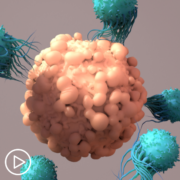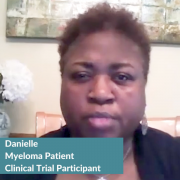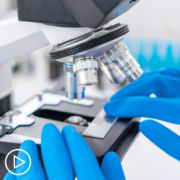How Is CAR T-Cell Therapy Changing the Myeloma Treatment Landscape?
How Is CAR T-Cell Therapy Changing the Myeloma Treatment Landscape? from Patient Empowerment Network on Vimeo.
Myeloma expert Dr. Melissa Alsina discusses the evolution of myeloma treatment over the past several years, including an explanation of the two FDA-approved CAR T-cell therapies available for myeloma patients.
Dr. Melissa Alsina is an associate professor of medicine in the Blood and Marrow Transplant Program at Moffitt Cancer Center in Tampa, Florida where she also serves as head of the Multiple Myeloma Transplant Program. Learn more about Dr. Alsina, here.
See More from Innovative Myeloma Therapies
Related Resources:
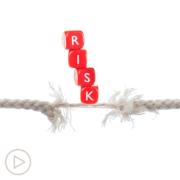
|

Is It Too Late for a Myeloma Second Opinion? |
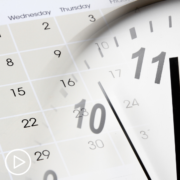
|
Transcript:
Katherine:
I’d like to start by talking about innovations in myeloma therapy. How have treatment options for myeloma evolved over the past several years?
Dr. Alsina:
Yeah, well, the easy answer to that is dramatically. It’s really amazing, the number of advances that we’ve had in the treatment. When I think 20 to 25 years ago, we had two drugs for myeloma, rare opportunity to get any patient in complete remission.
And now, we have many, many drugs, we continue to have bone marrow transplants, now we have CAR-T cellular immunotherapies, and able to get patients – over 80 percent of the patients in remission up front, and even in the relapse setting, many of them with CAR-T, for example. One of the CAR-Ts is able to get 80 percent of the patients in remission, so it’s really incredible, the amount of advances.
Katherine:
Yeah. How is CAR T-cell therapy changing the field?
Dr. Alsina:
So, we – probably everyone knows that there have been two CAR-T products approved for myeloma in the past year. We’re not doing as good as the lymphoma group. Those were the first CAR-T cells, were approved for lymphoma/leukemia, and for those patients with lymphoma and leukemia, there’s an opportunity for a cure, whereas in myeloma, in the setting that we’re using CAR-T right now, which is for patients that have failed multiple lines of therapy, at least four prior lines of therapy, those patients are not cured.
Katherine:
Yeah. You mentioned that there are two CAR T-cell therapies available right now for myeloma patients. What are they?
Dr. Alsina:
So, the first one, that was approved in March of last year the commercial name is Abecma. This is made by a company that is called BMS. It targets BCMA, which is B-cell maturation antigen, which is the protein that is preferentially expressed in the myeloma cells, so it’s a really good target for myeloma, and this is the one that studies show that we get response rates at about 75 to 80 percent with remission rates about 40 percent, and in the real world, since Abecma was approved, we’ve treated many patients – at Moffitt, actually, I think we have the largest number in the whole United States, close to 60 patients, and we’re seeing the same.
So, really, when we translate that to the real world, we’re seeing the same results, and I would argue that perhaps better because the patients that go on trial are very selective patients – they need to have good counts, they cannot have renal insufficiency, all this different criteria, and actually, when we looked at it, we found that 71 percent of the patients that we treated in the real world with Abecma would not have been eligible for trial, but yet, we’re getting the same results – the same results in terms of efficacy and the same results in terms of safety.
Katherine:
What is the second CAR T-cell therapy available?
Dr. Alsina:
The second CAR-T was approved just recently, in February of this year, and that is cilta-cel. The commercial name for this is Carvykti, and this one, we do not have a lot of real-world experience because the manufacture and availability of the product is still very limited, so we only have been able to do two patients per month with Carvykti. However, the studies show this agent to be extremely effective, with response rates close to 100 percent and a complete remission rate of 80 percent, which is…
Katherine:
That’s phenomenal.
Dr. Alsina:
Right? It’s phenomenal for this patient population. So, we’re definitely very excited with this. I think a major issue with CAR-T that you may or may not have heard – I’m pretty sure all the patients are aware of this, but it’s the availability. When these products are approved, because these products have to be manufactured from the patient cells, the companies cannot release – cannot meet the demand, so there are a lot more patients that need CAR-T than product availability.
So, we have a waiting list, and this is true for all centers. With the first product, with ide-cel/Abecma, now, at least, in our center, we have been able to catch up a little bit. We’re getting about eight slots per month, so it’s a significant amount. We still are not able to offer it to every single patient that needs it at the moment, but we’re doing much better than the beginning.
As I mentioned before, with Carvykti, it’s still a significant challenge, and again, we’re getting maybe one or two slots per month. Talking with these companies, they expect that is going to improve by early next year, so we’re keeping our fingers crossed because right now – and this is true for us and many myeloma centers – we have over 100 patients in the waiting list.
But in any case, even with that, I would encourage any patient that needs CAR-T to go to a center because even though we have a long list, for example, some of those patients that are on the list, they don’t need CAR-T right now, so it doesn’t mean that 120 patients on the list need CAR-T at the moment. So, we normally would go down the list according to when we saw the patient, and then the needs of the patient at the moment that we have a slot, and that’s how we make our selection.
So, the ideal situation is the patient seeks a CAR-T consult early on. Don’t wait until you have failed four therapies to go. When you start your third line of therapy, go, because then you get on the list. By the time you really need it and are eligible to get it, then it might be accessible to you.

